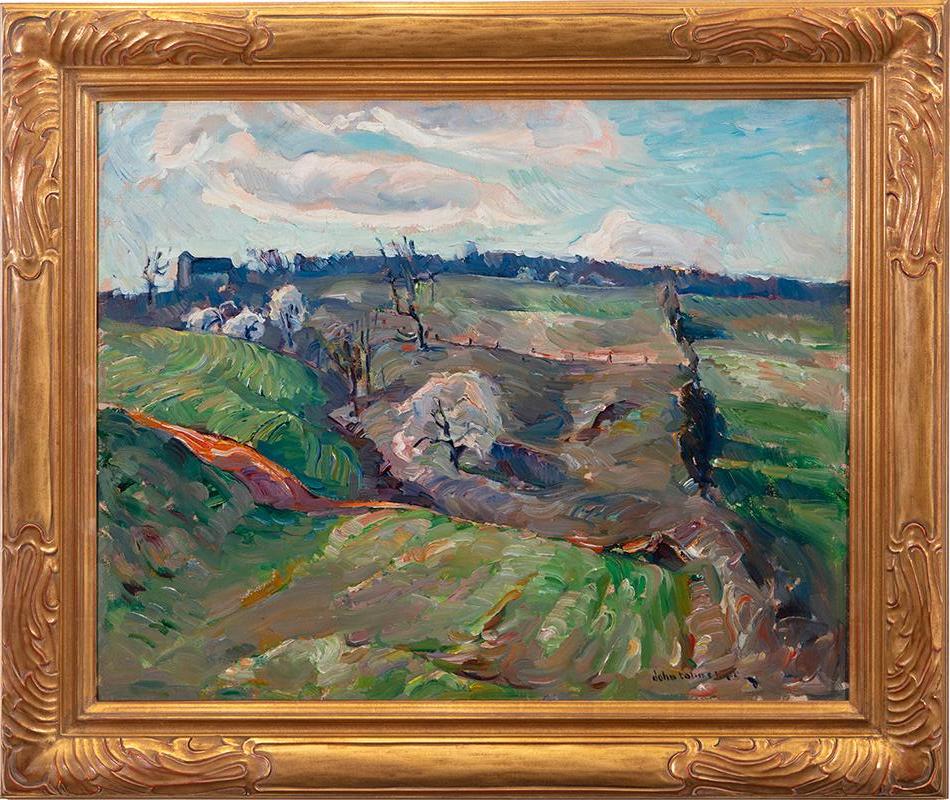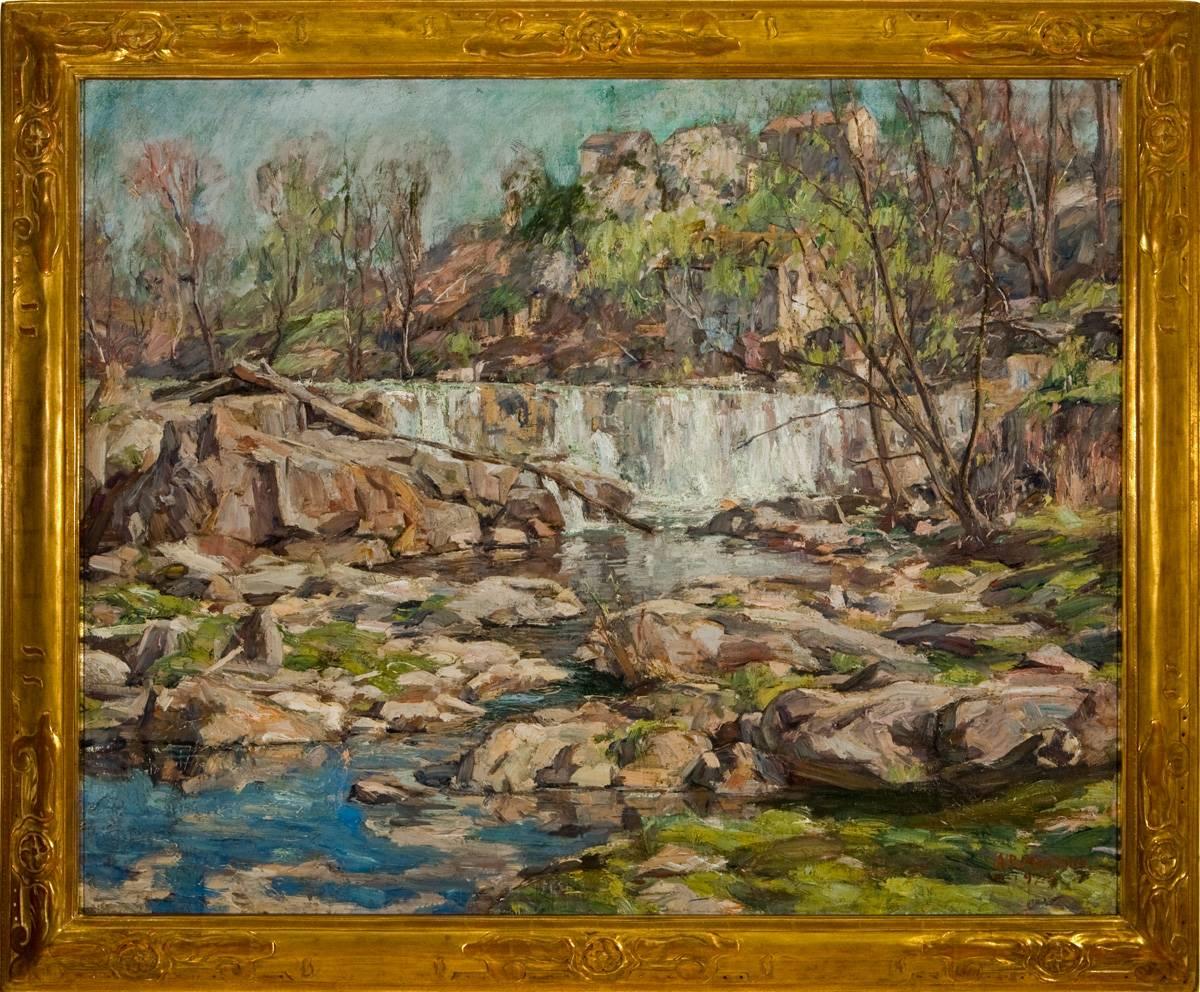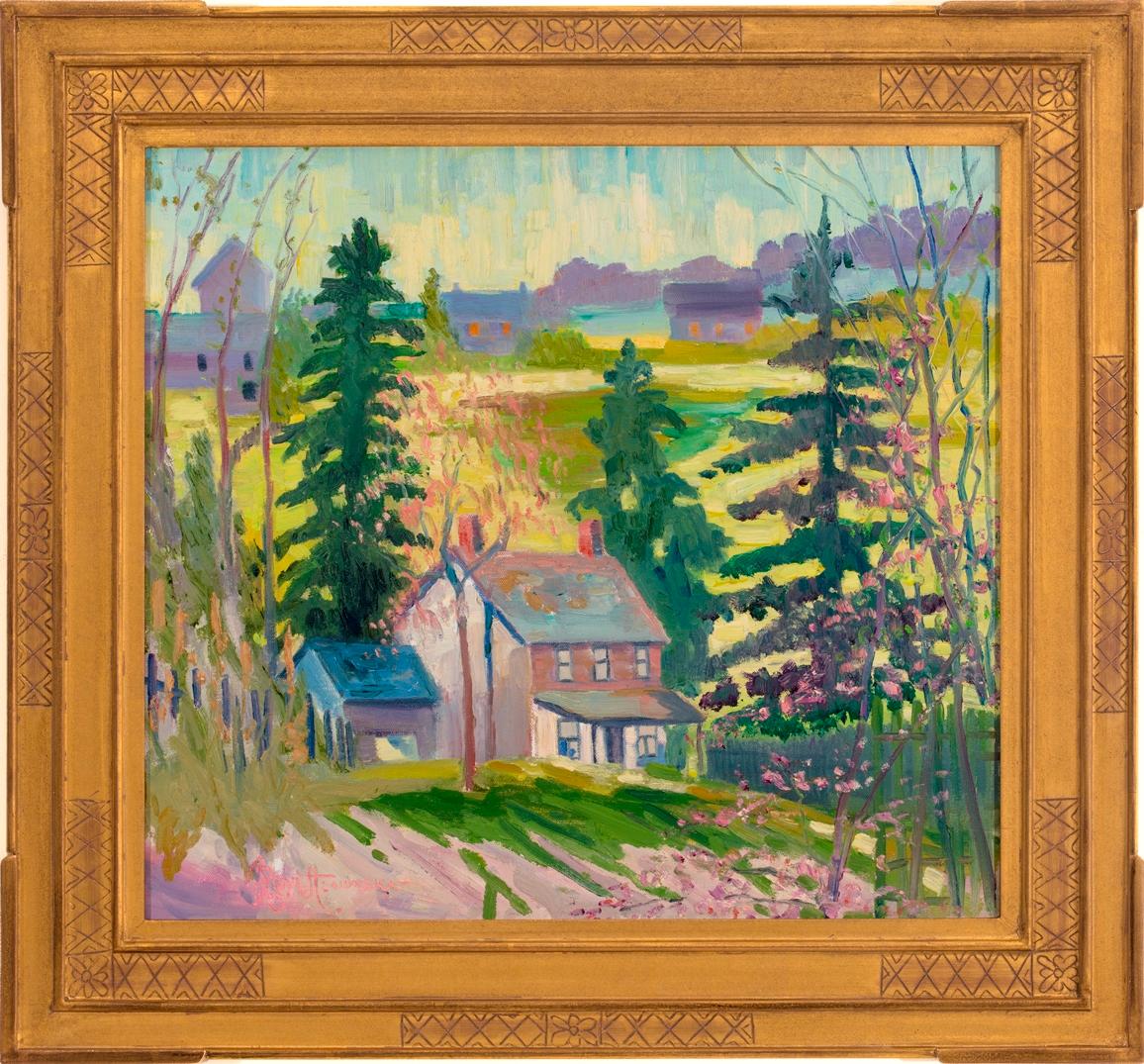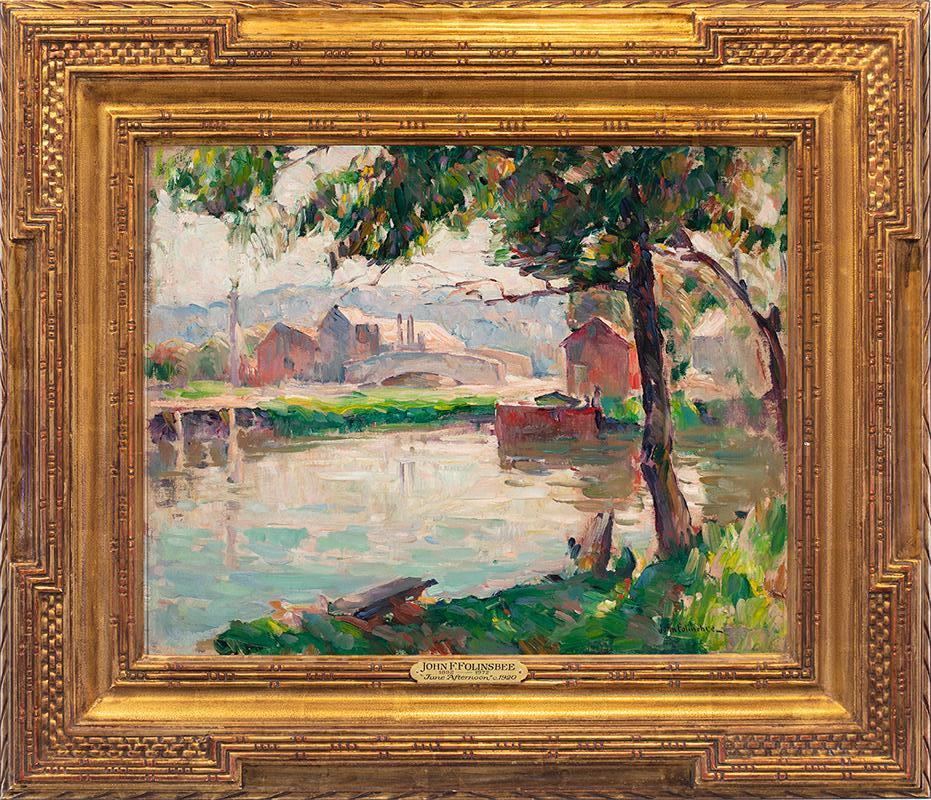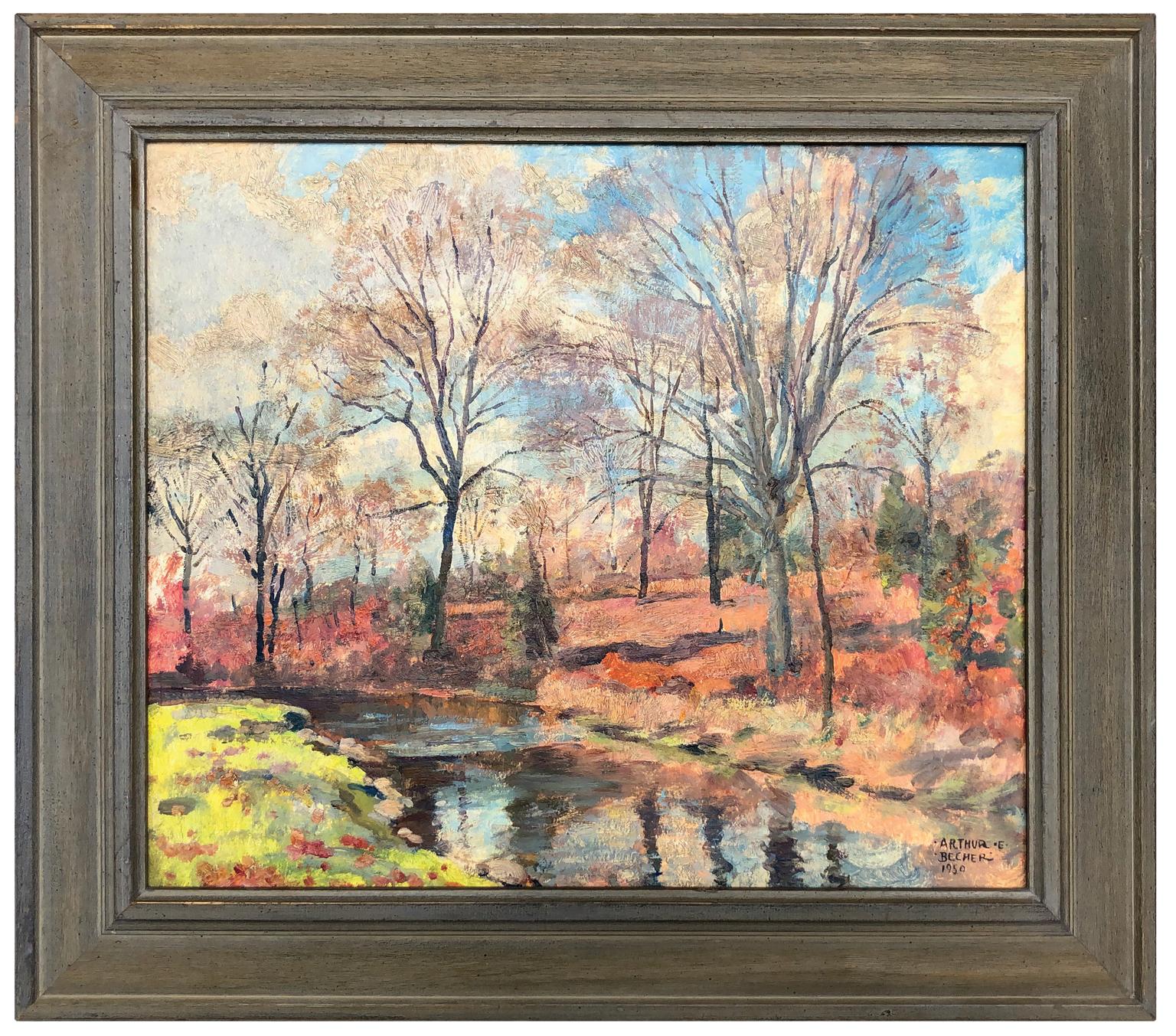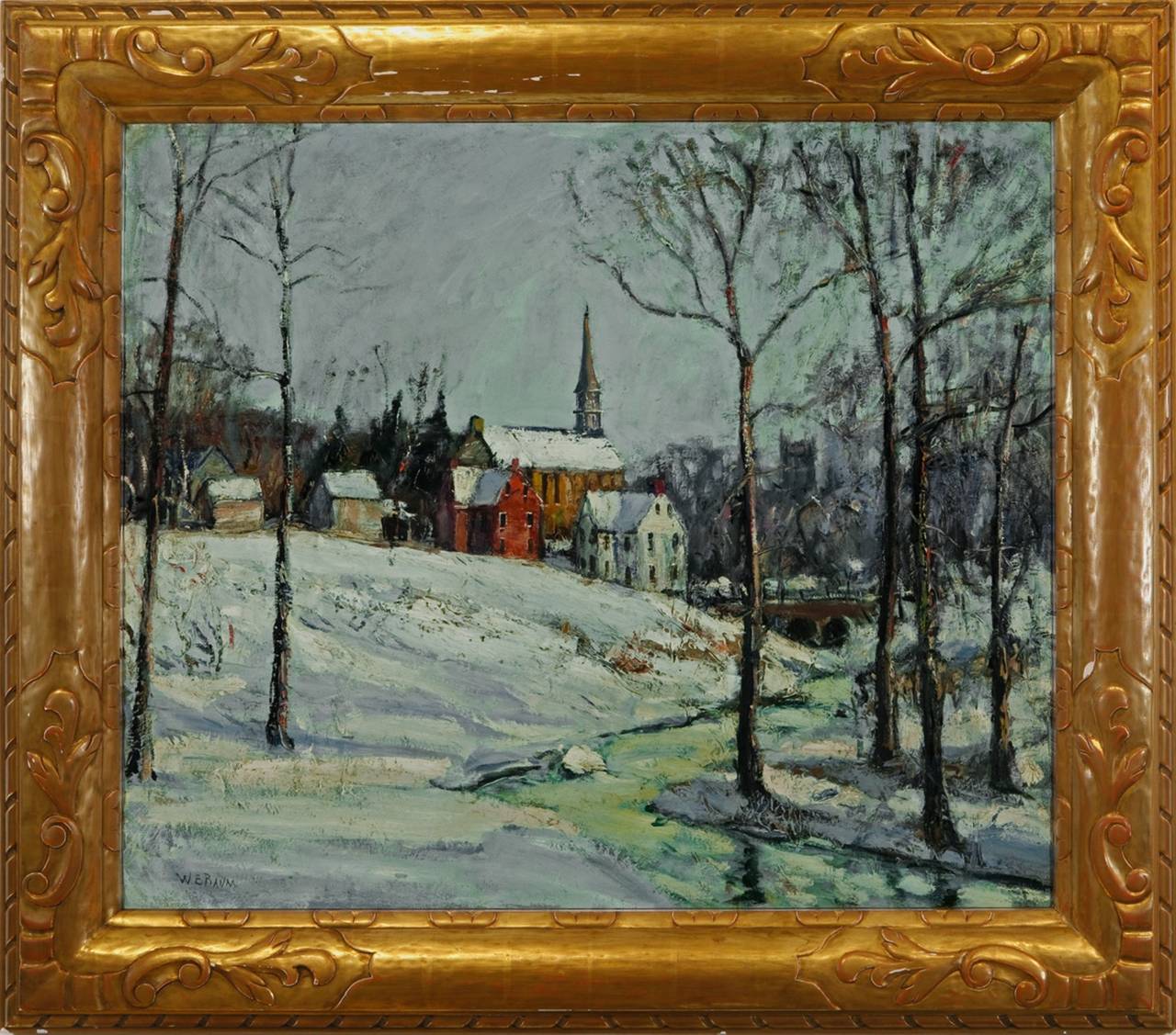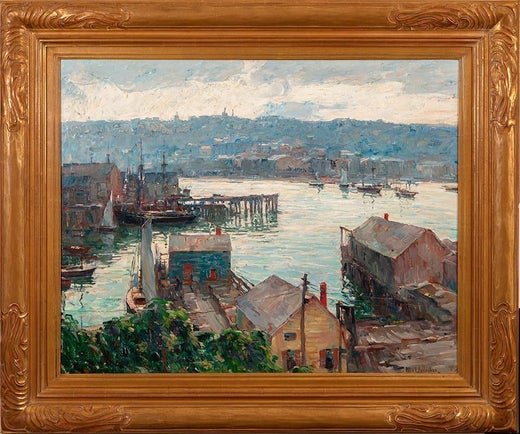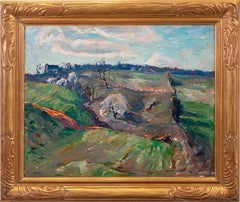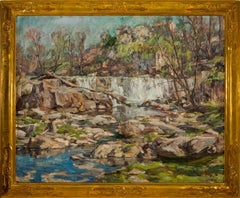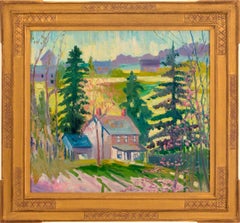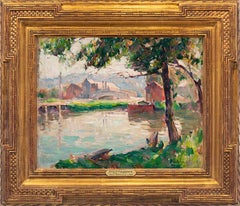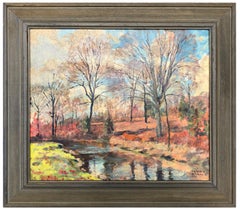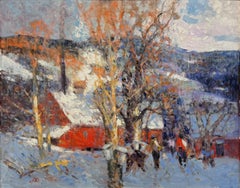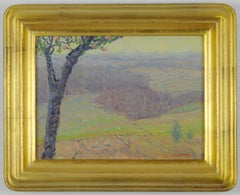John Fulton Folinsbee« Jour de mars »c. 1920
c. 1920
À propos de cet article
- Créateur:John Fulton Folinsbee (1892-1972, Américain)
- Année de création:c. 1920
- Dimensions:Hauteur : 60,96 cm (24 po)Largeur : 76,2 cm (30 po)
- Autres éditions et dimensions:Framed Size 33" x 39" 1.5"Prix : 158 078 €
- Support:
- Mouvement et style:
- Période:
- État:
- Adresse de la galerie:Lambertville, NJ
- Numéro de référence:Vendeur : LAMNJJ41stDibs : LU374932323
John Fulton Folinsbee
L'un des meilleurs peintres à s'être embarqué dans la New Hope Art Coloni, John Fulton Folinsbee, l'a fait en 1916. Né à Buffalo, dans l'État de New York, c'était un jeune homme actif qui aimait faire du sport et nager comme la plupart des gens. Au cours de l'été 1906, alors qu'il passe des vacances en famille à Sea Cliff, Long Island, Folinsbee (surnommé Jack) se sent extrêmement fatigué alors qu'il nage dans la baie. À peine arrivé sur le rivage, il s'effondre, frappé par la poliomyélite. Cette attaque, qui a failli lui coûter la vie, a laissé ses jambes paralysées et son bras droit gravement affaibli. La poliomyélite le confinera dans un fauteuil roulant pour le reste de sa vie. Pour ne rien arranger, une semaine plus tard, le frère aîné de Folinsbee est tué dans un accident de plongée. Face à ces adversités, il a su tirer le meilleur parti de sa situation. Déterminé à ne pas se laisser abattre par ce handicap, il s'inscrit en 1912 à l'Art Students League de Woodstock, dans l'État de New York, sous la tutelle de Birge Harrison et de John F. Carlson. Ces deux hommes s'avéreront être de puissantes influences dans le développement de sa carrière. C'est là qu'Artistics a rencontré son ami de toujours et le témoin de son mariage, un autre artiste, Harry Leith-Ross. Folinsbee épouse Ruth Baldwin en 1914 et, deux ans plus tard, sur la suggestion de Birge Harrison, le couple s'installe définitivement à New Hope. Folinsbee et Ruth ont eu deux filles, Elizabeth et Joan. Folinsbee a déclaré à propos de Harrison : "Je dois peut-être plus à M. Harrison dans le développement de mon travail et l'influence de son amitié sur mon caractère qu'à tout autre homme", et à propos de John F. Carlson : "Je suis très reconnaissant de l'enseignement que m'a donné John Carlson". J'en avais besoin." En 1924, Folinsbee a acheté une propriété le long de la rivière Delaware sur Main Street à New Hope, où il a fait concevoir et construire une maison par l'artiste et architecte Morgan Colt. Ce lieu est resté la maison et le studio de Folinsbee jusqu'à la fin de sa vie. Au début de sa carrière (1912-24), Folinsbee peint dans un style impressionniste lourd, avec des coups de pinceau brisés appliqués de manière serrée, dont la technique est similaire à celle des œuvres de Childe Hassam. Au milieu et à la fin des années 1920 et dans les années 1930, ses coups de pinceau s'élargissent. Ses œuvres figuratives de cette période ont une forte connotation ashkanienne. À la fin des années 1930 et dans les années 1940, ses traits deviennent encore plus larges et il finit par utiliser un couteau à palette pour l'application de la peinture. L'été, Folinsbee se rendait souvent dans le Maine avec sa famille, où il chargeait l'équipement dans un petit bateau et partait peindre. Il a appris à s'adapter à presque toutes les situations, sans se laisser arrêter par son handicap. Dans le domaine de la peinture américaine du XXe siècle, peu d'artistes peuvent rivaliser avec l'habileté de Folinsbee. Il était vraiment l'un des meilleurs artistes de New Hope. L'œuvre de Folinsbee a été représentée dans de nombreuses expositions nationales importantes entre 1913 et 1970 et a reçu de nombreuses médailles, prix et récompenses. Ses œuvres font partie des collections permanentes de la Pennsylvania Academy of the Fine Arts, de la Rhode Island School of Design, de la National Academy of Design, de la Phillips Collection à Washington, de la Corcoran Gallery of Art, du Museum of Fine Arts à Houston, du New Jersey State Museum, du Princeton University Art Museum, du Philadelphia University Art Club, du Reading Public Museum, du National Art Club et du James A. Michener Art Museum, entre autres.
- ExpéditionRecherche du devis...Expédition depuis : Lambertville, NJ
- Politique des retours
Plus d'articles de ce vendeur
Tout afficherannées 1930, Impressionnisme américain, Peintures - Paysage
Toile, Huile
années 1920, Impressionnisme américain, Peintures - Paysage
Toile, Huile
Fin du XXe siècle, Impressionnisme américain, Peintures - Paysage
Toile, Huile
années 1920, Impressionnisme américain, Peintures - Paysage
Huile, Toile
20ième siècle, Impressionnisme américain, Peintures - Paysage
Toile, Huile
années 1920, Impressionnisme américain, Peintures - Paysage
Toile, Huile
Suggestions
Milieu du XXe siècle, Impressionnisme américain, Peintures - Paysage
Huile
Milieu du XXe siècle, Impressionnisme américain, Peintures - Paysage
Huile, Toile
années 2010, Impressionnisme américain, Peintures - Paysage
Toile, Huile
années 1920, Impressionnisme américain, Peintures - Paysage
Huile
Début du XXe siècle, Impressionnisme américain, Peintures - Paysage
Toile, Huile
Milieu du XXe siècle, Impressionnisme américain, Peintures - Paysage
Toile, Huile
